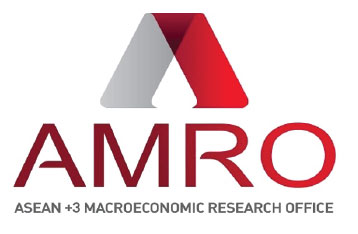SINGAPORE, October 16, 2025 – China’s near-term growth is gradually gathering momentum as the economy undergoes a challenging transition. Emerging sectors are expanding briskly. However, domestic demand remains constrained by the real estate sector downturn and the uncertain external environment.
Taking these factors into consideration, the ASEAN+3 Macroeconomic Research Office (AMRO) projects China’s GDP growth at 4.8 percent in 2025 and 4.4 percent in 2026. This projection is based on AMRO’s preliminary assessment following its Annual Consultation Visit (ACV) to China from August 28 to September 13, 2025.
The AMRO team was led by Lead Economist Jae Young Lee, while AMRO Director Yasuto Watanabe and Chief Economist Dong He participated in key policy meetings. Discussions centered on the drivers and constraints of China’s near-term economic outlook, key risks and vulnerabilities, macroeconomic policy stance, and policy space to bolster recovery and support structural transformation.
Economic developments and outlook
“China’s post-COVID economic recovery has progressed steadily. However, it has taken on a two-speed trajectory, with emerging sectors gaining momentum while traditional growth engines remaining subdued,” said Dr. Lee. “In the near term, the economic recovery is on track. Stronger and sustained growth will require addressing legacy issues forcefully and implementing structural changes to boost household incomes.”
Growth rebounded in the fourth quarter of 2024 and momentum was sustained through the first half of 2025. Supported by fiscal policies, private consumption contributed more than half of GDP growth in the first six months of 2025. Strong exports, partly driven by frontloaded shipments ahead of possible US tariff hikes, supported the recovery.
Fiscal stimulus has lifted retail sales and infrastructure investment, but consumer spending remains subdued amid weak income growth and ongoing property market pressures.
Meanwhile, the combination of intense competition, cautious consumer sentiment, and continued expansion of production capacity has kept prices low—leaving core inflation moderately positive and headline inflation flat. AMRO projects China’s CPI inflation at 0.0 percent in 2025 and 0.4 percent in 2026.
Risks and vulnerabilities
The balance of near-term risks is tilted to the downside, as China navigates a complex mix of legacy issues and long-term structural challenges, both domestic and external. On the upside, a faster resolution of the property sector overhang and local government financing difficulties could provide a larger-than-expected boost to economic activity.
Domestically, cyclical and structural headwinds include the profound adjustments in the real estate sector, persistent financing strains on some local governments, and asset quality deterioration for some small and medium-sized banks. Longer-term challenges include population aging, climate change, and geoeconomic fragmentation.
Externally, persistent high uncertainties in US trade policy could weigh on China’s exports and growth. Adverse developments in US policies, such as those affecting cross-border investment and technology exchange, could further dampen investment sentiment and increase financial market volatility. Deeper geopolitical fault lines could also complicate China’s efforts to rebalance its economy and sustain long-term growth.
Policy recommendations
The authorities have appropriately adopted an expansionary fiscal stance in 2025 to support domestic demand. Key measures include scaling up the consumer trade-in program, accelerating fiscal transfers, and introducing national childcare subsidies. With near-term risks tilted to the downside, fiscal policy will likely need to remain expansionary in 2026, complemented by targeted policy initiatives.
The accommodative monetary policy stance remains appropriate, supported by record-low policy rates and ample liquidity. However, persistently weak sentiment—despite lower borrowing costs—continues to dampen credit demand. Monetary policy should stay accommodative, with scope for further easing to reduce refinancing costs and pre-empt rising real debt burdens, while safeguarding financial stability and reinforcing fiscal efforts to restore confidence and revitalize growth.
Stronger policy coordination between central and local governments is needed to address housing inventory overhang and support real estate recovery. Restoring homebuyer confidence requires ensuring the delivery of pre-sold houses and tailoring policies for cities in different tiers according to their specific conditions and challenges.
Achieving sustained, high-quality growth over the long term will require placing local government finances on a sound and sustainable footing. This calls for further reforms in the central-local fiscal relationships. Equally important is fostering more resilient and inclusive household consumption, underpinned by a higher labor share in national income and a people-centered fiscal framework that prioritizes public services, social protection, and human capital.
A successful growth transition will require recalibrating incentive systems that have driven over-investment in a few concentrated sectors. A more disciplined industrial policy could raise productivity, crowd in private investment, and facilitate green and digital transformation. Deeper financial sector and capital markets reforms, supported by stronger monetary policy transmission, will help improve the allocative efficiency of capital.
Against a backdrop of rising protectionism and geoeconomic fragmentation, China can play a leading role in upholding the rules-based global trading system by aligning domestic reforms with global standards.
The AMRO team would like to express its sincere appreciation to the Chinese authorities and other participating organizations for their cooperation and candid exchange of views during the mission.
About AMRO
The ASEAN+3 Macroeconomic Research Office (AMRO) is an international organization established to contribute toward securing macroeconomic and financial resilience and stability of the ASEAN+3 region, comprising 10 members of the Association of Southeast Asian Nations (ASEAN) and China; Hong Kong, China; Japan; and Korea. AMRO’s mandate is to conduct macroeconomic surveillance, support regional financial arrangements, and provide technical assistance to the members. In addition, AMRO also serves as a regional knowledge hub and provides support to ASEAN+3 financial cooperation.
